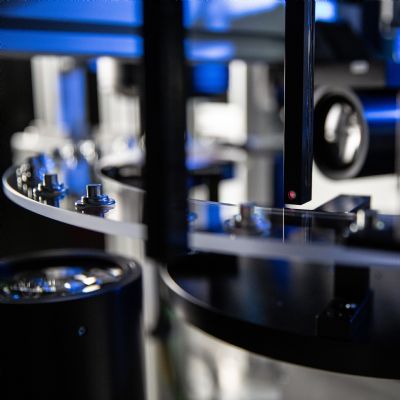Fluck references the incredible resolutions and capabilities in smart phones as an example of the capabilities inherent in cameras—they are no weak link in the inspection chain. Advantages of housing cameras in a modular unit include the ability to isolate the environment and lighting to ensure proper conditions for image capture. And, should recurring jobs demand precise camera placement, such setups can be exchanged from one job to another—simply remove/insert camera-containing trays—to eliminate the need to set cameras for each recurring run, and prevent operators from making imprecise adjustments. Note that the need to inspect multiple part features may require an array of cameras, which can introduce complexity and challenges, Fluck offers.
Robust Software Makes It Possible
Identifying part features and identifying bad parts, then tracking and precisely removing bad parts while the press continues churning out good parts, owe to advances in computer processing within the past decade, and the ability for parallel processing that allows real-time identifications and actions.
“Industrial computers, with so many process kernels, can compute in parallel—performing multiple operations simultaneously—and keep up with terrific press speeds,” Fluck says.
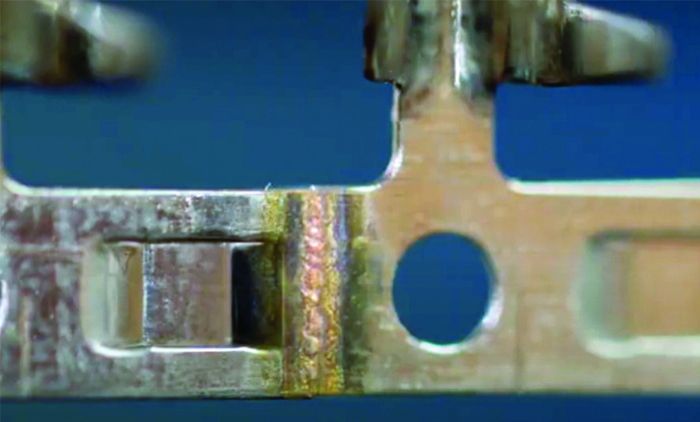 For its part, Jenoptik offers full software for its PSS-40/LCLW—the station now is available in North America and Europe—to provide real-time image processing and analysis, and statistical analysis. Users can create test jobs and analyze those before storage as real jobs. And, should the software detect an increased number of bad parts, it will provide real-time messages to alert technicians for closer looks at the stamping process to determine causes. During lights-out operation, the system can be programmed to cut out an entire strip section instead of individual bad parts in order to maintain production without taking up the entire loop of parts that reside between the press and the inspection station.
For its part, Jenoptik offers full software for its PSS-40/LCLW—the station now is available in North America and Europe—to provide real-time image processing and analysis, and statistical analysis. Users can create test jobs and analyze those before storage as real jobs. And, should the software detect an increased number of bad parts, it will provide real-time messages to alert technicians for closer looks at the stamping process to determine causes. During lights-out operation, the system can be programmed to cut out an entire strip section instead of individual bad parts in order to maintain production without taking up the entire loop of parts that reside between the press and the inspection station.
Jenoptik also has introduced artificial intelligence to detect a difference between a nonconforming weld and a good weld for parts that have undergone laser welding. The system compares millions of pictures based on previous data and learns over time.
No More Manual Cutting
Specific to Jenoptik’s technology, as the unit provides 100% part inspection, its software detects and marks out-of-tolerance parts to be separated in subsequent processes. Separation and subsequent joining of the carrier strip typically has been carried out via mechanical separation and thermal joining, which usually requires manual intervention by an operator, all as production stands still for several minutes. Not anymore.
Integrated laser processing replaces manual intervention and enables uninterrupted stamping. A laser within the inspection station cuts and drops the bad part with loose ends of the punched carrier strip reconnected through laser welding. The adjustable laser beam and beam guidance enable the laser to reach difficult-to-access positions to provide precise cuts and welds. A fully automatic tensile test then verifies the weld. The parts will maintain perfect pitch from pilot to pilot so that downstream operations using automation will not be affected nor require manual intervention.
Cutting via laser means elimination of mechanical-cutter wear, notes Fluck.
“Mechanical cutting typically is followed by laser welding, a combination that often works well,” he says. “But it does have disadvantages. A mechanical cut does not stay consistent due to cutter wear, leading to overlapping strip edges, for example. And, different parts require different, specialized cutting tools. Integrating automated laser cutting and welding eliminates process-slowing mechanical cutting and its inherent problems.”
It is the automated laser cutting/welding innovation that won Jenoptik’s Optical Test and Measurement Solutions business unit the “Best Award” in the Stamping Technologies category at BlechExpo 2023. And, the future of inline automatic vision inspection also may employ lasers for marking as well as cutting out parts and welding strips, Fluck offers.
Another advantage of advancements in inline visual part inspection: They not only enable continuous production, but free personnel for other tasks.
“Let the camera do the simple job of checking part features,” Fluck says. “Instead of inspecting parts and welding strips, personnel instead can focus on process improvement, and diagnosing bad parts. Does it only happen during the night shift? Is there a material problem? Free them for these tougher challenges.” MF
See also: Bruderer Machinery, Inc., Jenoptik Automotive North America LLC
Technologies: Quality Control
Comments
Must be logged in to post a comment. Sign in or Create an Account
There are no comments posted.CMM Boasts Digital Integration, and Delivers Speed, Precisio...
Tuesday, May 6, 2025
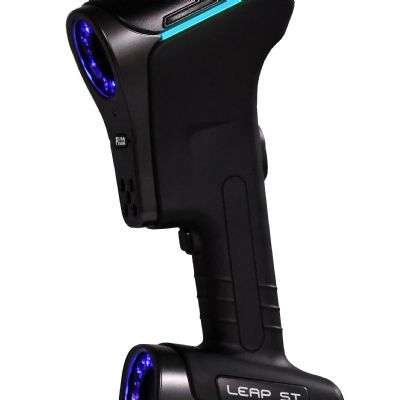 Quality Control
Quality ControlFaro Debuts Handheld Scanner, Updates Software
Friday, February 21, 2025
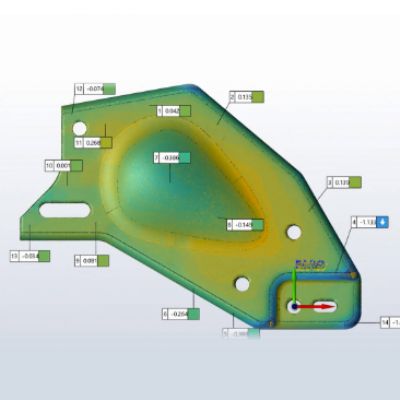 Quality Control
Quality ControlUpdated 3D-Measurement Software Offers Modules to Handle Var...
Wednesday, February 5, 2025







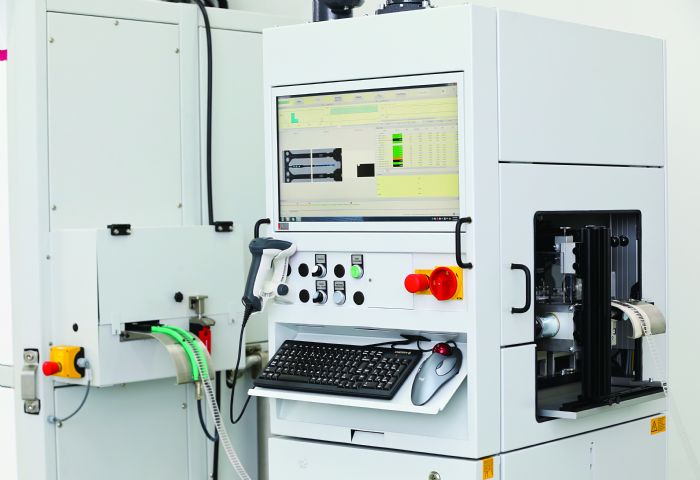 The demo setup included a modular Jenoptik PSS-40/LCLW optical-inspection station inserted inline just beyond a Bruderer press, with newly stamped sample electrical parts on a strip funneled through the station via an adjustable strip guide and then on to an automatic takeup reel. The press ran at hundreds of strokes/min., with speed varied to allow a closer look of the inspection station in action. A stamped-part-strip loop between the press and the station allowed time for the station to do its work while stamping continued—and it was doing plenty of work.
The demo setup included a modular Jenoptik PSS-40/LCLW optical-inspection station inserted inline just beyond a Bruderer press, with newly stamped sample electrical parts on a strip funneled through the station via an adjustable strip guide and then on to an automatic takeup reel. The press ran at hundreds of strokes/min., with speed varied to allow a closer look of the inspection station in action. A stamped-part-strip loop between the press and the station allowed time for the station to do its work while stamping continued—and it was doing plenty of work. 